Retrospective justice: do the long deceased have rights?
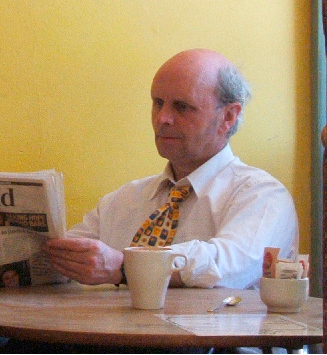
David Black
David Black considers the standard of moral perfection to which we hold figures from the past and the opportunity for self-aggrandisement it creates in the present.
Glasgow University’s decision to remove the name of renowned geologist John Walter Gregory from one of its more mediocre campus buildings is perfectly understandable in view of the fact that the gentleman so honoured was a shameless racist who, if he hadn’t fallen out of a canoe in Peru in 1932 (a line which Flanders & Swan could surely have used to good effect) would undoubtedly have become an enthusiastic admirer of the rise of Europe’s various fascist regimes.
Gregory’s white supremacist rants would not only be unacceptable today – they were even incendiary in his own time. Despite the fact that on his first major expedition to Africa he was entirely dependant on 40 black African porters, his views were not tempered by gratitude or empathy. On the contrary, they appear to have been informed by some kind of deep-seated irrational prejudice and loathing.
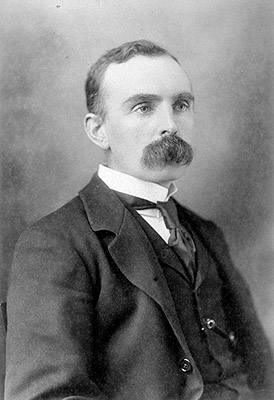
John Walter Gregory
It seems remiss, in the circumstances, that whoever it was who chose to apply his name to the boring 1970s building in question as late as 1998 hadn’t done a little judicious vetting beforehand. Had they taken the trouble they might have discovered, as well as Gregory’s writings on Africa’s great rift valley, a morally suppurating 1925 essay entitled The Menace of Colour. No need here to quote any of the man’s reprehensible views; that title says it all.
They might also notice that the architectural practise responsible for his eponymous building, Joseph Gleave & Partners, had been founded by a man who first made his name as the designer of a lighthouse in the Dominican Republic built as a monument to Christopher Columbus, the 15th century genocidal maniac who pioneered the Atlantic slave trade and pursued the elimination of indigenous peoples in the Caribbean. Mr Gleave became head of Edinburgh College of Art School of Architecture in 1935, and can thus be blamed for training that generation which went on to create some of the worst built horrors of 1960s Scotland, but that’s another story.
The Gregory building has been renamed after Dr Modiri Molema, scion of a princely line from Mafeking who studied medicine at Glasgow during the First War and went on to become secretary of the African National Congress – a man whose record seems unblemished, thankfully.
Some, however, feel it might have been more appropriate to name it after Ethel Dobbie Currie, first woman president of the Geological Society of Glasgow. Others felt the name of an archaeologist might have been equally appropriate, since the building also accommodates that particular department. Why not Harold Plenderleith, who worked on the excavations of Tutankhamun’s Tomb (and lived!) or Alexander Keillor, who used some of his family’s Dundee marmalade wealth to purchase the important prehistoric site at Avebury, Wiltshire? Other archaeologists are available.
The problem with naming an academic building after an individual is, of course, that very few of us ever attain perfection. Manchester University’s now demolished 1963 Moberly Tower, which even the pro-modernist Sir Nicholas Pevsner derided as ‘characterless and deplorably unsubstantial’, had a vague resemblance to Edinburgh’s erstwhile David Hume Tower, of which more shortly. Moberly Tower was named after a chairman of the University Grants Commission who advocated expansion some time before Lord Robbins’ famous report, so he had a certain ‘great and good’ lustre.
But look a little further into Sir Walter Moberly’s thinking and he comes across as an enthusiastic supporter of Frank Buchman’s Moral Re-Armament movement, a shamelessly right wing evangelical pressure group which not only preached the virtues of wholesome living to the young – not always easy by the 1960s – but also pursued a cold war agenda. Moberly’s belief was that Britain needed more science graduates, and therefore more university places, so that we would always stay well ahead in the arms race. Fair enough, perhaps, yet maybe a wee bit sketchy.
The fact that some might feel queasy about the motives or political views of certain individuals should not, of course, disqualify them from having a building named after them, unless their views were, like Gregory’s, entirely beyond the pale. Some had misgivings about naming one of the more architecturally turgid structures on the Edinburgh University Campus, Appleton Tower, given that the Nobel prize winning superstar physicist after whom it was named, Sir Edward Appleton was an eager proponent of Britain’s military and industrial nuclear programme as head of the UK’s Department of Scientific and Industrial Research from 1939 until 1949. On the other hand he was one of Edinburgh University’s longest serving principals. It would probably have been downright churlish not to recognise him.
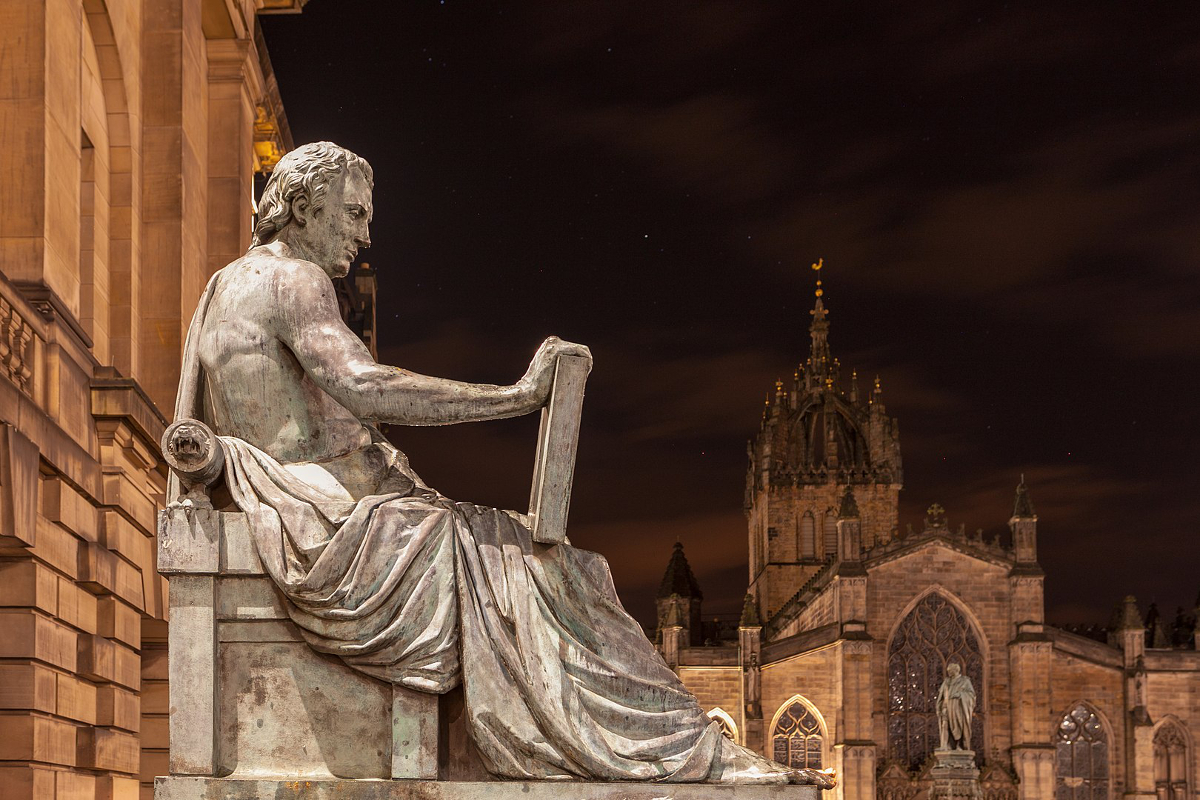
Statue of Hume by Alexander Stoddart on the Royal Mile in Edinburgh
Credit: Bandan - own work, CC BY-SA 3.0
The great cause célèbre of de-accessioning a building’s name for political reasons lies about a hundred yards south of Sir Edward’s soaring monstrosity, and its name is, or was, the David Hume Tower. If proof were needed that we desperately require some sort of independent commission or Court of Final Instance to regulate this anarchic clamjamfray of portentious de-naming and re-labelling then surely this is it.
Hume’s now infamous crime was a later ‘notorious footnote’ in his otherwise innocuous essay Of National Characters first published in 1748. While he prefaced his assertion that the white races were of superior intelligence to all others with a hesitant ‘I am apt to suspect’ the point was made. He was berated at the time by, amongst others, the Aberdeen Philosophical Society which stated ‘Mr Hume – had you been born and bred a slave, your Genius, whatever you may think of it, would never have been heard of.’
This uncharacteristically slipshod a priori solecism didn’t even satisfy Hume’s own evidence-led system of empirical logic, and Hume scholars, by and large, have spent the last quarter of a millennium regretting a folly predicated on ignorance. He knew absolutely nothing, for example, about the great university of Timbuktu which had been founded in 1327 and developed the most important library in Africa since the destruction of Alexandria.
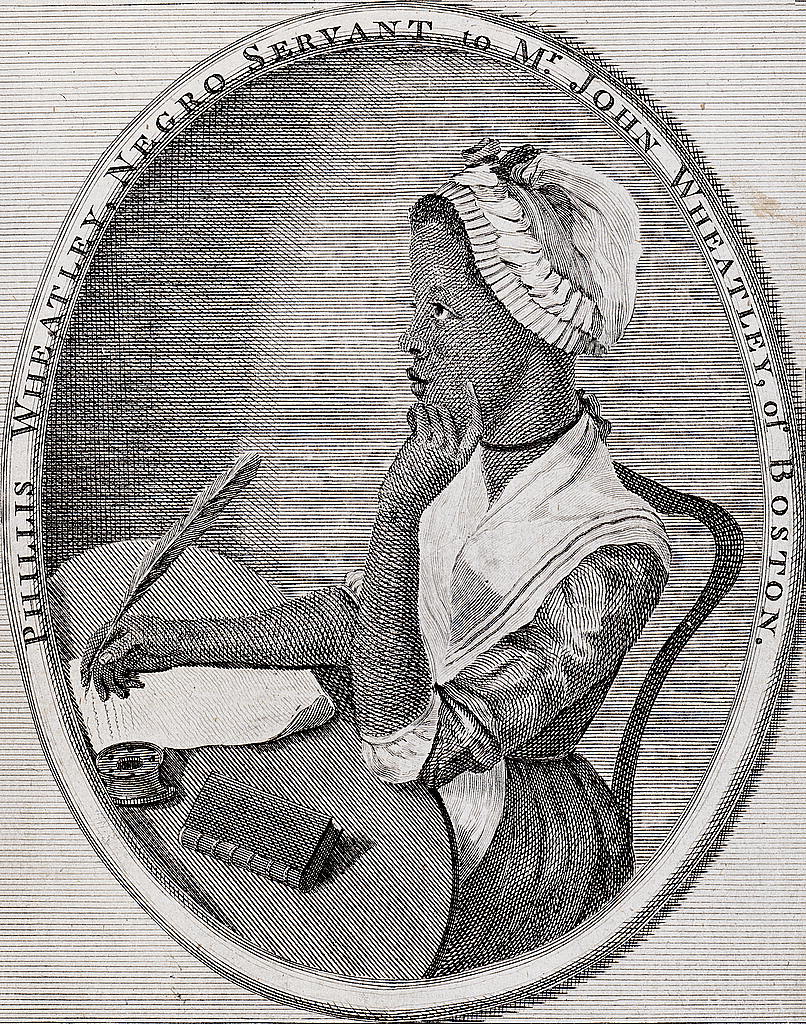
Phillis Wheatley
Hume was probably aware of the enslaved African-American poet, Phillis Wheatley, who by 1771 was a celebrity in London, though the title of her book Poems on Various Subjects, Religious and Moral was unlikely to have had much appeal for a confirmed sceptic like himself. A further blot on the escutcheon is the accusation that, although he was a declared opponent of slavery, he failed to dissuade his patron, Lord Hertford, from investing in a slave plantation.
In setting out the charge sheet, however, these particular offences, while certainly objectionable, must be set against the considerable contribution David Hume made to the advancement of an enlightenment philosophy which had, at its core, a belief in ethics, and a stress on both sympathy and empathy in social discourse and human behaviour. He was also consistent in his opposition to slavery, which he regarded as ‘more cruel and oppressive than any other civil subjugation whatsoever’.
Hume’s defenestration was an example of cancel culture at its bleakest. The whistle was blown by a student from North Carolina who was studying neither philosophy nor history. Nor was she, as a Nordic American, a member of any ethnic minority.
She raised a petition which initially sought to replace Hume’s name with that of Edinburgh alumnus Julius Nyrere, until it was pointed out that not only did that particular man end up as the head of a one party state where dissidents were regularly detained without trial, but he was also a dedicated homophobe in a country which, to this day, has laws on the statute book which can punish consensual same-sex adult conduct with life imprisonment. His name was deleted from the petition.
No matter – the quarry here was obviously the dead 18th century philosopher. The petition garnered between 1,700 and 1,800 votes which, in a city with a total student population of perhaps 80,000, could hardly be described as a landslide, especially since it was evident that many of the signatories had nothing to do with any university.
No matter again – Edinburgh University’s Principal promptly capitulated to the petitioners’ demands, and in so doing made for himself a rod for his back which ended up with some demanding his resignation and others accusing him of denigrating the Scottish Enlightenment.
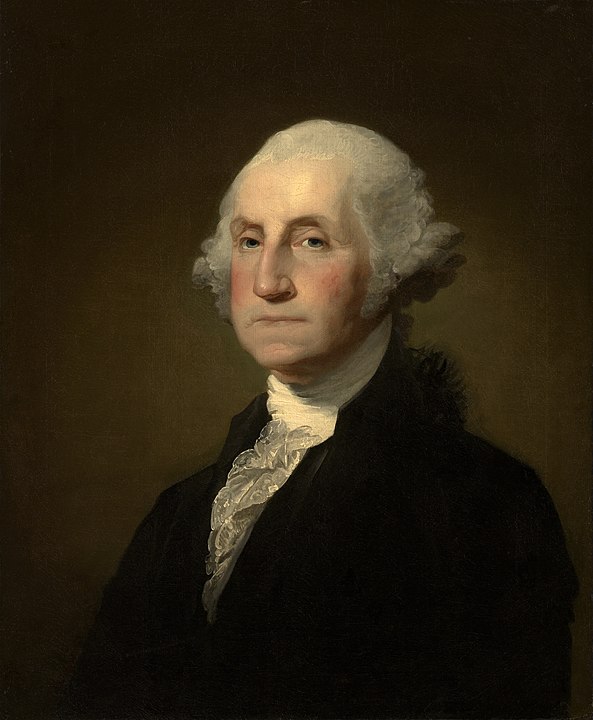
George Washington
Your writer, trying to be helpful, suggested one way out of his worsening dichotomy might be to leave Hume’s name in place while raising subscriptions for a statue to Jamaican born William Fergusson on a site just opposite the Hume Tower. There, the first African-descended student to matriculate at the university (1809) – as well as the first to become governor of a British colony, Sierra Leone – could provide a necessary urban corrective to Hume’s moral frailties.
This went nowhere, at which point your writer, perceiving that an issue initiated by an American lady had plunged the depths of absurdity, set up a somewhat tongue-in-cheek petition to the effect that in the event of the failure of the Principal and Senate to re-instate Hume’s name then the United States Senate and Congress should be urged to remove the name of George Washington, ‘owner’ of 317 enslaved people, from the Federal city, and thereafter name it in honour of a man from Clackmannanshire, George Walker, who suggested in The Maryland Journal on January 23rd 1789 that the best way to stop various American cities squabbling among themselves about where the capital of the new republic should be was to take over an area of swamp and farmland by the Potomac and build a gleaming new US classical metropolis! Amazingly, around 300 people signed the petition, though ‘Walkertown DC’ has yet to become a reality.









